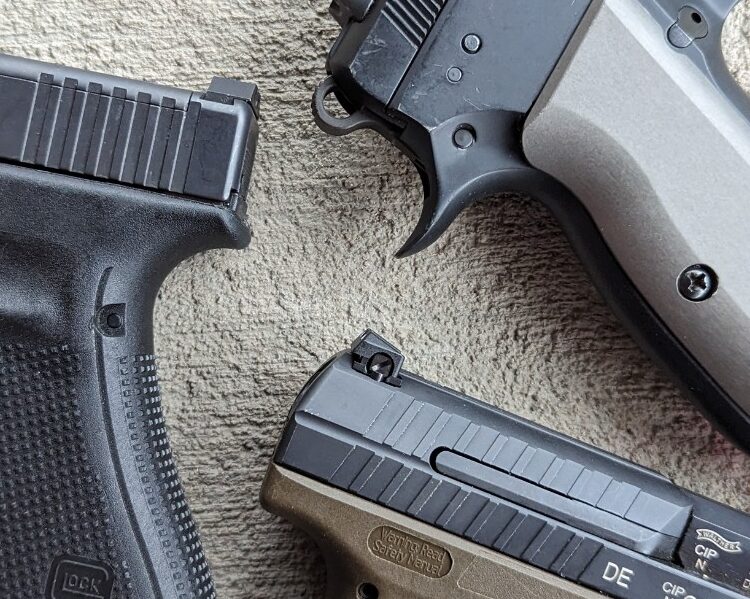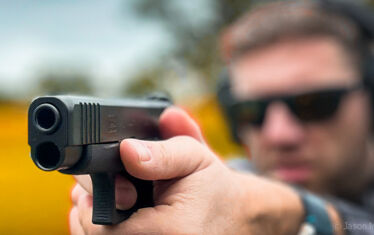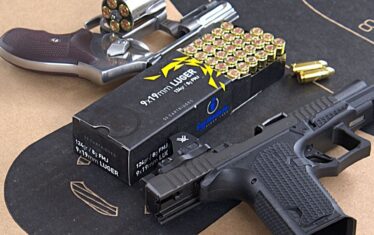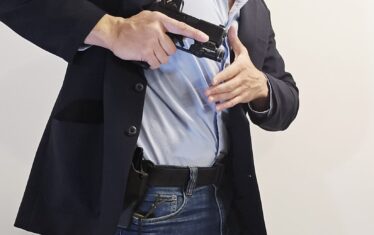Modern semi-automatic handguns have numerous action types and designs. Over the years, there have been trends where one type has dominated more than another, but to this day, four action types tend to rule the modern handgun realm: single-action (SA), double-action (DA), double action / single action (DA/SA), and partially cocked striker.
When you shop for handguns, you’ll notice that these phrases pop up over and over again, but do you know what they mean? Let’s explore the four most common action types and the pros and cons of each system.
Single Action
In a single-action handgun, the trigger does one thing and one thing only: release the firing mechanism. The vast majority of this action type is hammer-fired. The most famous examples are the M1911 and Browning Hi-Power. Single action only doesn’t always refer to hammer-fired guns, though. Guns like the Walther PPQ use a true single-action striker-fired design.
Single-action triggers are known for being remarkably crisp and light. It’s the most common trigger type for bull’s eye competitors for a reason.
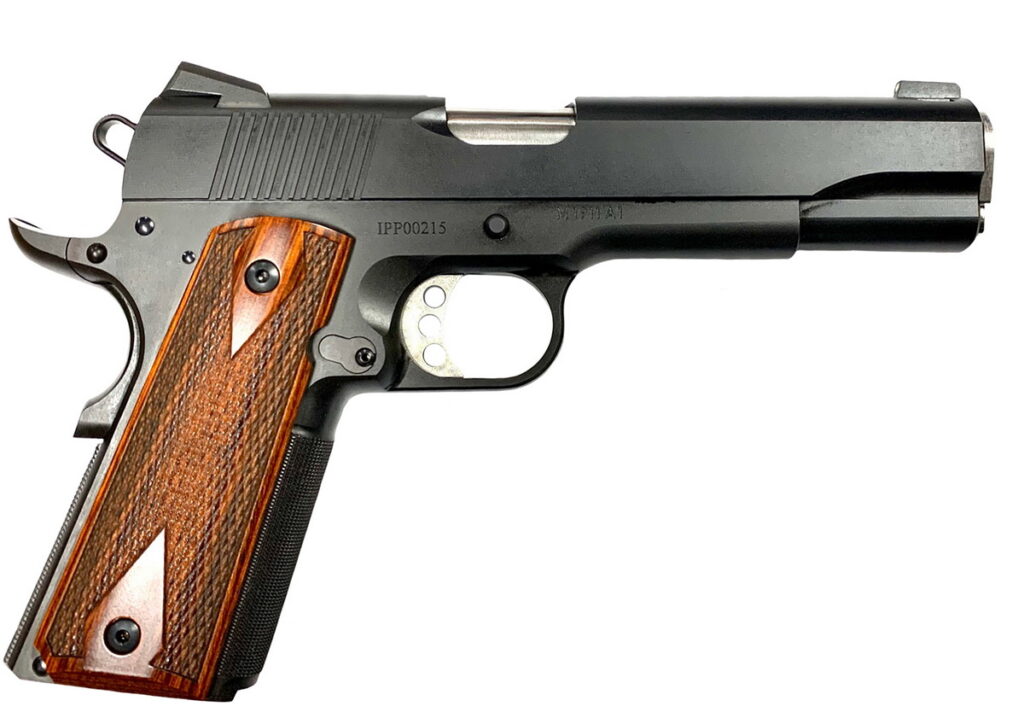
Single-action triggers have been observed to be somewhat too light in many cases, and most single-action guns have some form of manual safety.
The downside of single-action triggers comes down to the lack of the ability to restrike the round should a round fail to fire. You will also need to have the right discipline and training to deal with a very light trigger in stressful environments. It’s only as dangerous as the user, but single-action-only guns tend to require a bit more of a skilled user.
Double Action
In a double-action handgun, the trigger conducts two actions: cocking and firing the gun. Most double-action guns are hammer-fired, but double-action striker-fired guns do exist. The TARA TM9, for example, is an example of a double-action-only striker-fired handgun.
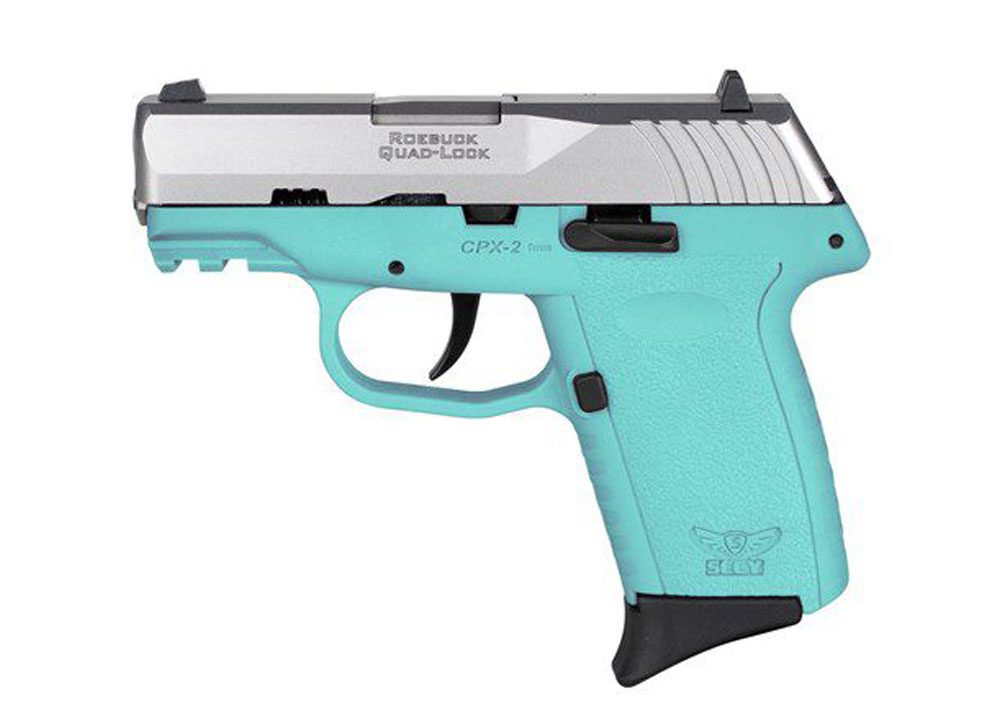
Double-action handguns are often touted as very safe. The trigger pull is quite long and heavy and requires a very dedicated trigger pull to fire. Having a negligent discharge with a DAO gun is difficult, though certainly possible. No amount of trigger weight and pull length can replace proper training. Double-action guns tend to allow the user to restrike if the gun goes click instead of bang.
That same heavy and long trigger pull that is touted as a safety benefit is often seen as a downside. Longer, heavier triggers make accurate shooting more difficult and allow for a greater degree of human error to take effect. Additionally, longer trigger pulls make fast shooting difficult.
Double Action / Single Action
Double action / single action, or DA/SA, is a hybrid of action types. The first pull of the trigger performs two actions, it cocks the gun and then fires it. After the first shot is fired, the gun converts to a single action, and the trigger performs the single action of firing the gun. These guns tend to be predominantly hammer-fired, but again, striker-fired guns like the Walther P99 offer a DA/SA design.
The DA/SA guns tend to try to offer the best of both worlds in one package. The longer double-action trigger pull makes the first trigger pull a deliberate choice with a reduction in the chance of a negligent discharge.
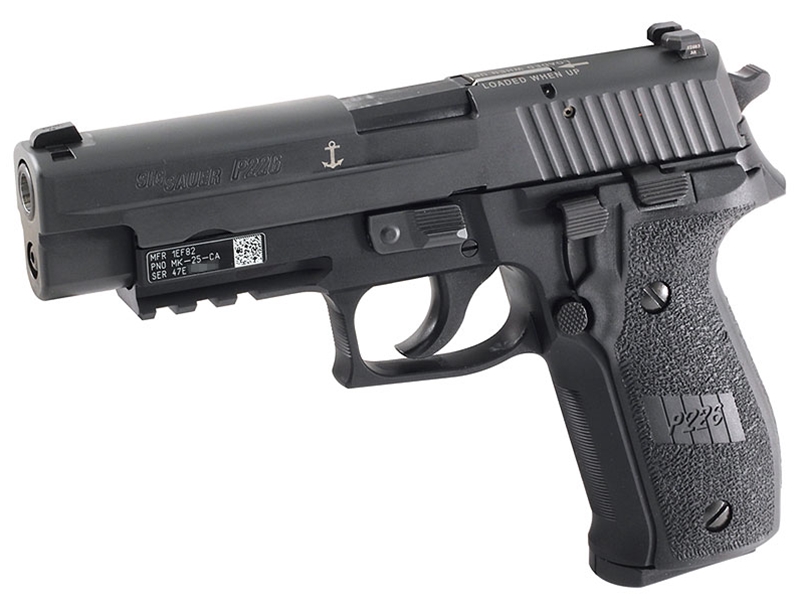
Subsequent shots allow for a shorter, lighter trigger pull for more accurate follow-up shots. Most hammer-fired options also allow you to manually cock the gun into single action or decock it into double action.
The downside of DA/SA guns tends to be their complexity. This can make them tougher to work on and upgrade and often makes them more expensive. Additionally, the single action of DA/SA guns is rarely as good as a single action-only design.
Partially Cocked Striker
The partially cocked action type meets the definition of a double action. The striker mechanism is partially cocked when you operate the slide and load the firearm. When you pull the trigger, the striker fully cocks and then releases, firing the gun.
The reason why we don’t file this under the double action category is due to how light and short the trigger pull tends to be. Additionally, a partially cocked striker design doesn’t allow you to pull the trigger again if the gun goes click instead of bang.
Currently the most popular of all the action types, the partially cocked striker is used in guns from Glock, FN, S&W, and many, many more.
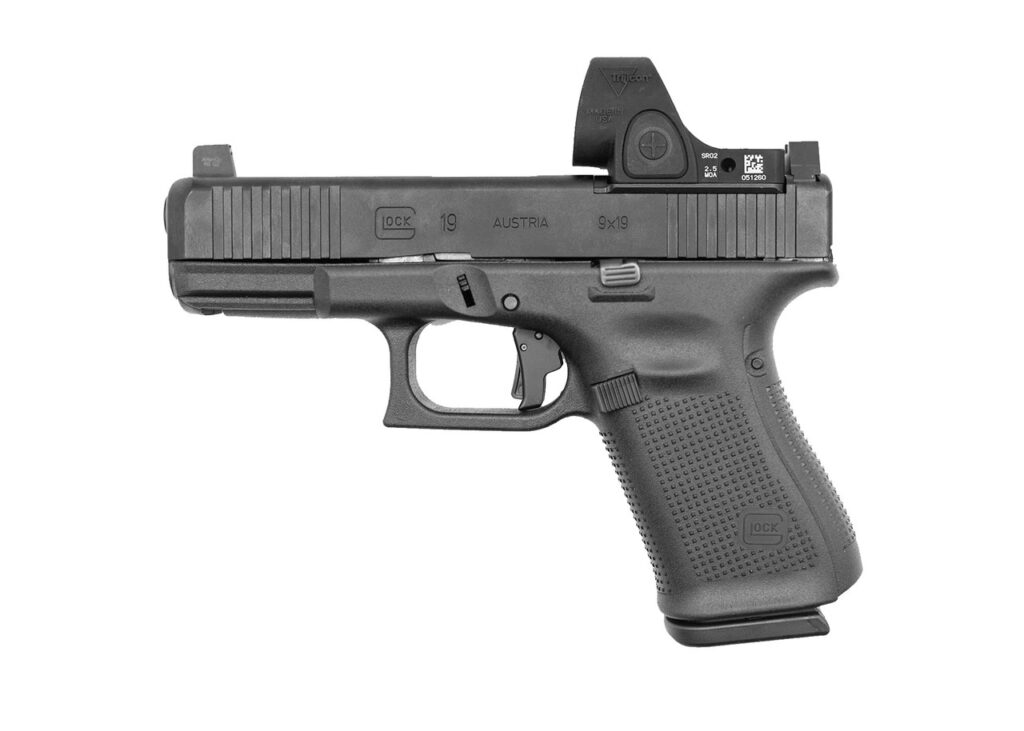
The partially cocked striker isn’t as light as most single-action triggers but is much lighter than other double-action triggers. It’s consistent, crisp, and easy to shoot accurately with.
There aren’t many drawbacks to this action type. There is no way to decock the striker without pulling the trigger, and a lot of these guns force you to pull the trigger to take the gun apart. Some feel this practice is dangerous, but proper clearing methods make it as safe as dry fire. Finally, there is no second-strike capability.
Handgun Action Types and You
Each one of these action types is proven and successful. Which action type is for you? I tend to really like DA/SA guns, but sadly, with striker fire dominance, there aren’t many hitting the market these days. There isn’t a wrong option, but there is a right option for you.





